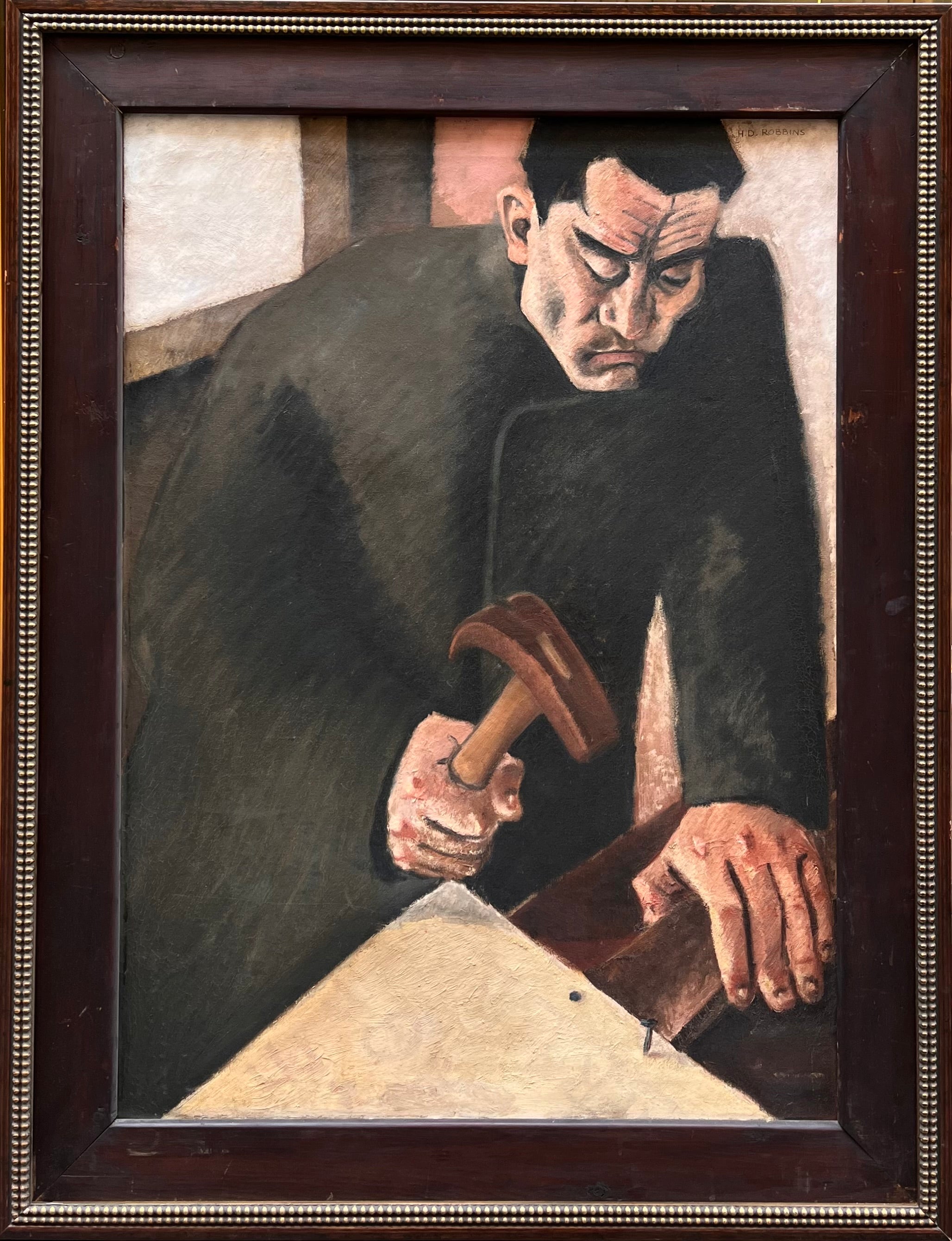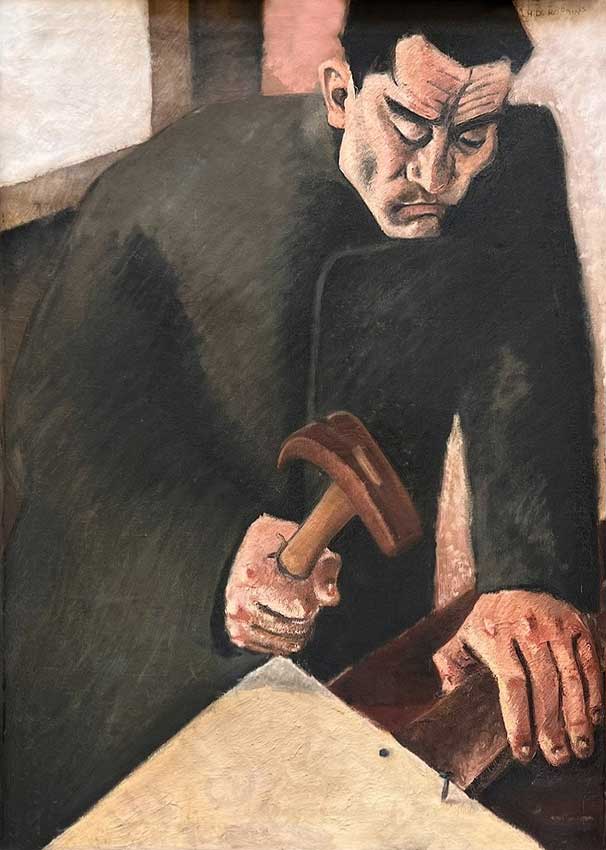

Hulda D Robbins
The Protestor
Oil on canvas, signed upper right, dated '1934' verso
Image size: 36 1/4 x 26 inches (92 x 66 cm)
Original frame
Provenance:
Artist's estate
Here, we can see a man creating creating a protest sign, in objection to the poor economic and labour conditions of America during the Great Depression. Robbins was part of the WPA movement, a government-sponsored programme that sought to financially aid artists during the Great Depression. The programme was soon criticised for spreading socialist messages - for example, depicting a protesting worker, as in this painting.
The WPA was an extensive movement and had no cohesive style. The visual characteristics of this work take clear influence from the Expressionist movement. Robbins was heavily inspired by the works of Kathe Kollwitz during her studies at the Prussian Academy of Arts in Berlin, and the extent of Kollwitz’s impact on Robbins’ work is readily apparent in this painting. The simple colour palette of muted browns create a bleak atmosphere to the work, accentuating the dire living conditions of the working classes in America in the 1930s. The background and clothing of the man are blocky and unspecific, but his hands and face are rendered in exquisite detail. Robbins captures the light on the man’s hands, the redness of his knuckles, and the bending of the joints in his hand masterfully. The man’s face is pallid, once more accenting the painting’s sombre mood, and the lines in his face are deep and dark - this is clearly a man who has not shied away from hard work.
Not only is this painting a truly striking example of American Expressionism, but it also depicts the social impact of the Great Depression, marking this work as a historical testament to those who fought to improve social conditions across America.
Hulda D Robbins
Robbins was born in Atlanta, Georgia, as the daughter of immigrants from Berlin. She was initially a student at the Pennsylvania Museum and School of Industrial Art before moving to study at the Prussian Academy of Arts in Berlin, where she became heavily influenced by the work of Kathe Kollwitz. She then returned to America to further her study at the Barnes Foundation in Philadelphia.
In 1940, Robbins moved to New York, where she started her art career alongside teaching. She produced a number of lithographs, woodcuts, and serigraphs during her time in New York. Her early period is marked by more realistic and grounded urban scenes, whilst her mid-1940s works began to become more abstract. Some of her works were exhibited in the 1940 Museum of Modern Arts show ‘Prints Under $10’. The show aimed to bring affordable art to wide audiences. Besides MoMA, Robbins exhibited at the Dallas Museum of Fine Arts in 1947 and 1951 as part of the National Serigraph Society.
Robbins moved in 1963 to be closer to her parents in Ventnor, New Jersey. She passed away in Ventnor in 2011. She is best known for her screenprints and was part of the group of screenprinting pioneers that included Ruth Gikow, Edward Landon, Max Cohn and Ruth Chaney. Her works can be found in prestigious collections such as the Noyes Museum, the National Gallery (Washington), and the Philadelphia Museum of Art.



